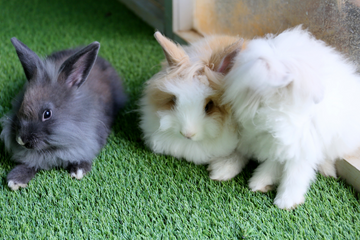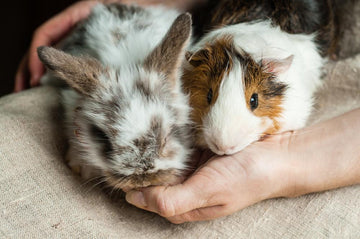How to Cord Proof Your Home to Protect Your Small Pets
Small pets like to chew electrical cords which can lead to burns and electrocution if your small pet chews through the cover and down to the wires.
Click Here For a Guide to Understanding Your Rabbits Diet.

Spiral Cord Wrap
People typically use spiral cord wrap in areas where they have multiple wires that they want to keep organized and protected, but it can also be used on single cords. It’s made of a flexible material that you wrap around the cords in a spiral pattern. If you’re using cord wrap to protect your cords from pets, make sure that the spirals are close enough together that small mouths and jutting teeth can't reach between the spaces. Ideally, wrap the spirals so they overlap and there are no spaces for curious pets to explore.
Flexible Tubing
If you have cords that must run around corners or furniture, or you have a pet that’s a proven chewer who works through cord wrap, consider flexible tubing for protection. This tubing is easy to bend in the direction you need, and it can turn into a "toy" for your small pet to roll over or rub against, rather than a chewing option.
PVC Pipe
For the most stubborn of chewers, run your cords through PVC pipes to prevent chewing. PVC is a hard material that isn’t flexible, so you may have to purchase curved joints to connect the pipes if your wires don't run straight. These pipes are a good choice if your small pet becomes fixated on a specific cord, either because it's in an area they frequent often, or it offers a tempting target for reasons only pets understand.
Wire Concealers
Wire concealers are a great way to cover your wires and protect them from curious pets if you’re worried about the aesthetics of piping or tubing. Concealers run along the baseboards and walls, and are made in various colors to match the decor of your home. They keep wires almost completely out of sight other than up near the socket.
The Combination Approach
The best way to keep your rabbit, guinea pig or other small pet safe from the harm posed by electrical cords is to combine the above approaches to ensure that all the cords are covered. If you use wire concealers, the section of cord going into the socket will be exposed. The fact that it’s sticking out at that juncture might pose a curiosity to a small pet who decides to chew it. For this section of exposed cord, use flexible tubing or spiral wrap for an added layer of protection.
Take Additional Steps to Keep Your Small Pet Happy and Healthy
You should also protect your outlets from curious small pets. Use outlet covers that plug directly into unused sockets to prevent your pet from sticking her nose inside. You can also purchase boxes that cover the entire outlet. These stop your pets from accidentally pulling loose cords from outlets or chewing the cord near the plug.
Also consider closing off certain rooms that contain a lot of cords from your pets. Use gates, and supplement them with pieces of wood to cover any holes. For very small pets, use large pieces of wood instead of gates. After closing doors, cover the opening between the door and the floor with a draft protector or something else that blocks entry.
After you cord-proof your home, take stock of your overall approach to caring for your beloved small pet. Feed your rabbit, guinea pig or chinchilla high-quality hay and give them chew toys by shipping them straight to your home from RabbitHoleHay.com. If they’re happy and healthy due to a good diet and otherwise occupied with chew toys, they are more likely to leave your cords alone!

Fun and Unique Names for Rabbits

Rabbit Guinea Pig Nutrition Guide






![RHDV2 Critical Information + Frequently Asked Questions [Updated 03/20/2025]](http://www.rabbitholehay.com/cdn/shop/articles/rhdv2-critical-information-frequently-asked-questions-V1.png?v=1742490107&width=360)

